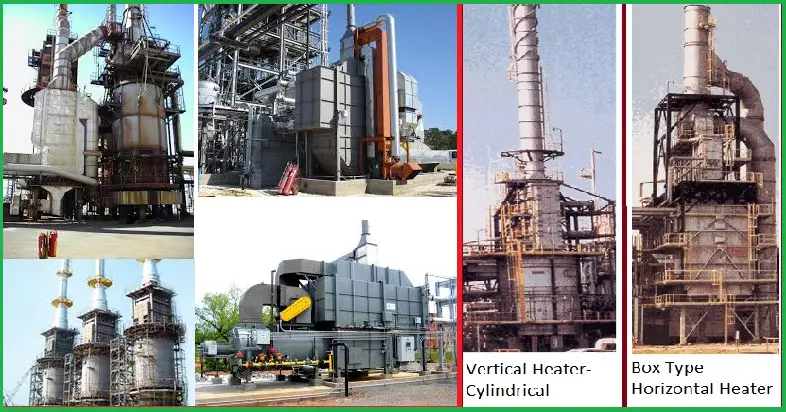Metals are popular and widely used because of their capability to withstand extreme conditions. Sustaining high temperature is one such ability. Furnaces, ignition nozzles, high-speed machinery, combustion engines, jet engines, and exhaust systems are consistently working at high temperatures that can cause the melting of certain materials. Hence, the melting temperature of metals is a selection criterion when choosing materials for high-temperature applications. So, the melting temperature of metals must be known prior to use in a specific application. In this article, we will explore more about the melting point temperatures of various metals and alloys.
What are the Melting Points of Metals?
A metal’s melting point temperature is defined as the lowest metal temperature at which the metal starts to transform from a solid phase into a liquid phase. Scientifically, it is known as the melting point temperature of materials. At the melting point temperature, the metal’s solid and liquid phase coexists in equilibrium. On application of more heat, the temperature will not increase till the complete solid phase transforms into the liquid phase and thereafter temperature will grow again.
Why is the Metal Melting Temperature Important?
The melting point temperature of a metal is one of the most important considerations for various industries as stated below:
- In the casting industry where the end product is manufactured in foundry shops by melting the metal and pouring that liquid metal into various cast forms. So, information regarding those metals’ melting point temperature must be known to heat that metal or alloy for liquefication.
- The melting temperature of metals and alloys is an important parameter for metallic modifications, the production of new alloys, laboratory experimentation, etc in metallurgical industries.
- Heat treatment of metals and alloys also requires information about the melting temperature of that material so that it is not heated till melting.
- High-temperature applications should use metals with high melting points. So material selection also requires information related to melting point temperature.
- Welding of materials needs the data for metal’s melting point temperature.
Melting Points of Metals and Alloys
Melting Point of Steel:
The melting point of steel depends on the type of steel. This alloy contains traces of other alloying elements that are added purposely to improve its corrosion resistance, ease of fabrication, and strength. Depending on the presence and percentage of alloying elements, the melting point of steel varies. In general, steel’s melting point is around 1370°C (2500°F) but it varies within a range. Let us explore the melting point of steel with the below-mentioned five main types of steel:
Melting Point of Carbon Steel: Low Carbon Steel contains carbon (0.05 to 0.15 wt%), copper (0.6%), manganese (1.65%), and silicon (0.6%). The melting point of low carbon steel is 1410°C (2570°F).
High carbon steel containing 0.3 to 1.7 wt% of carbon has melting points ranging from 1425-1540°C (2600-2800°F).
The melting point of Stainless Steel: The melting point of stainless steel containing 10.5% to 11 wt% chromium is 1510°C (2750°F). The melting point of Stainless Steel grade 304 ranges from 1400-1450°C; grade 316 ranges from 1375-1400°C; and grade 321 ranges from 1400-1425°C. The melting point of DSS grade 2205 ranges from 1385-1440°C. The melting points of other stainless steel grades are:
- Grade 430: 1425-1510°C (2597-2750°F)
- Grade 316: 1375-1400°C (2507-2552°F)
- Grade 434: 1426-1510°C (2600-2750°F)
- Grade 420: 1450-1510°C (2642-2750°F)
- Grade 304: 1400-1450°C (2552-2642°F)
- Grade 410: 1480-1530°C (2696-2786°F)
Melting Point of Maraging Steel: Maraging steel is a low carbon-iron alloy, having 15 to 25 wt% nickel as its main alloying element. The melting point of maraging steel is 1413°C (2575°F).
Melting point of Alloy Steel: Alloy steels containing 1 to 50 wt% of the alloying element are known as alloy steel. There are two groups of alloy steels: low alloy steels and high alloy steels. The melting point of low alloy steel is 1432°C (2610°F) and the same for high alloy steel is 1415°C (2600°F).
Melting point of Tool Steel: The hardest variety of Steels, Tool Steels contains 0.7 to 1.4 wt% Carbon and manganese, chrome, nickel, tungsten, molybdenum, phosphorous, and sulfur in various proportions as alloying elements. The melting point of tool steel varies in the range of 1400 to 1425°C (2550 to 2600°F).
Melting point of other Metals: Metal’s Melting Point Chart
The melting point of metals chart is provided below in a tabular format:
| Metal | Melting Point (0C) | Melting Point (0F) |
| Actinium | 1050 | 1922 |
| Admiralty Brass | 900 – 940 | 1650 – 1720 |
| Aluminum | 660 | 1220 |
| Aluminum Alloy | 463 – 671 | 865 – 1240 |
| Aluminum Bronze | 1027 – 1038 | 1881 – 1900 |
| Antimony | 630 | 1170 |
| Babbitt | 249 | 480 |
| Beryllium | 1285 | 2345 |
| Beryllium Copper | 865 – 955 | 1587 – 1750 |
| Bismuth | 271.4 | 520.5 |
| Brass, Red | 1000 | 1832 |
| Brass, Yellow | 930 | 1710 |
| Cadmium | 321 | 610 |
| Chromium | 1860 | 3380 |
| Cobalt | 1495 | 2723 |
| Copper | 1084 | 1983 |
| Cupronickel | 1170 – 1240 | 2140 – 2260 |
| Gold, 24K Pure | 1063 | 1945 |
| Hastelloy C | 1320 – 1350 | 2410 – 2460 |
| Inconel | 1390 – 1425 | 2540 – 2600 |
| Incoloy | 1390 – 1425 | 2540 – 2600 |
| Iridium | 2450 | 4440 |
| Iron, Wrought | 1482 – 1593 | 2700 – 2900 |
| Iron, Gray Cast | 1127 – 1204 | 2060 – 2200 |
| Iron, Ductile | 1149 | 2100 |
| Lead | 327.5 | 621 |
| Magnesium | 650 | 1200 |
| Magnesium Alloy | 349 – 649 | 660 – 1200 |
| Manganese | 1244 | 2271 |
| Manganese bronze | 865 – 890 | 1590 – 1630 |
| Mercury | -38.86 | -37.95 |
| Molybdenum | 2620 | 4750 |
| Monel | 1300 – 1350 | 2370 – 2460 |
| Nickel | 1453 | 2647 |
| Niobium (Columbium) | 2470 | 4473 |
| Osmium | 3025 | 5477 |
| Palladium | 1555 | 2831 |
| Phosphorus | 44 | 111 |
| Platinum | 1770 | 3220 |
| Plutonium | 640 | 1180 |
| Potassium | 63.3 | 146 |
| Red Brass | 990 – 1025 | 1810 – 1880 |
| Rhenium | 3186 | 5767 |
| Rhodium | 1965 | 3569 |
| Ruthenium | 2482 | 4500 |
| Selenium | 217 | 423 |
| Silicon | 1411 | 2572 |
| Silver, Coin | 879 | 1615 |
| Silver, Pure | 961 | 1761 |
| Silver, Sterling | 893 | 1640 |
| Sodium | 97.83 | 208 |
| Tantalum | 2980 | 5400 |
| Thorium | 1750 | 3180 |
| Tin | 232 | 449.4 |
| Titanium | 1670 | 3040 |
| Tungsten | 3400 | 6150 |
| Uranium | 1132 | 2070 |
| Vanadium | 1900 | 3450 |
| Yellow Brass | 905 – 932 | 1660 – 1710 |
| Zinc | 419.5 | 787 |
| Zirconium | 1854 | 3369 |









Well done nice decision